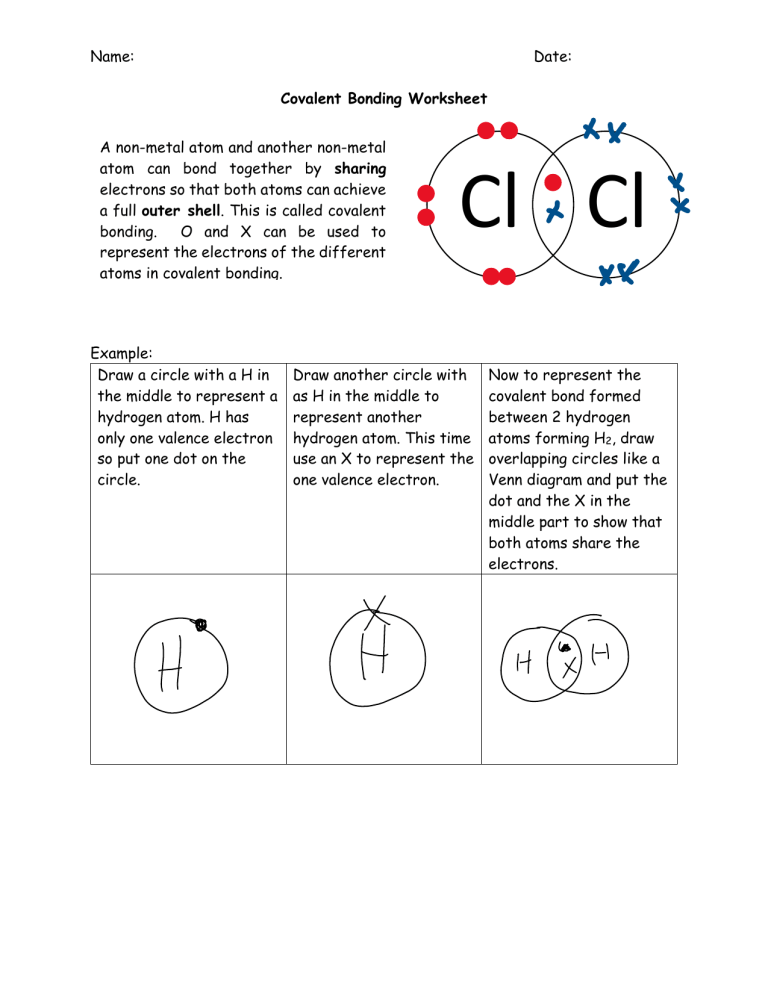
Name: Date: Covalent Bonding Worksheet A non-metal atom and another non-metal atom can bond together by sharing electrons so that both atoms can achieve a full outer shell. This is called covalent bonding. O and X can be used to represent the electrons of the different atoms in covalent bonding. Example: Draw a circle with a H in the middle to represent a hydrogen atom. H has only one valence electron so put one dot on the circle. Cl Cl Draw another circle with as H in the middle to represent another hydrogen atom. This time use an X to represent the one valence electron. Now to represent the covalent bond formed between 2 hydrogen atoms forming H2, draw overlapping circles like a Venn diagram and put the dot and the X in the middle part to show that both atoms share the electrons. Instructions It may be easiest to draw each atom individually first to work out how many electrons will be shared. 1. Draw the circles (outer shells) and overlap them (like a Venn diagram). 2. Write the symbols of the atoms in the middles of each circle. 3. Draw the electrons for atom as dots and the electrons for the other atoms and x. 4. Any shared electrons are drawn in the overlapping section. 5. Count the electrons for EACH atom to ensure they all now have a full outer shell (2 electrons for the first shell and 8 for the next 2 shells). F2 CH4 HCl CO2 H 2S H 2O HF NH3 H H O Complete the chart: Molecule Elements Number of valence electrons Hydrogen 1 Oxygen 6 Number of electrons shared Number of shared pairs of electrons; Type of bond 4 2 single H2 F2 CH4 HCL CO2 H 2S H 2O HF NH3




